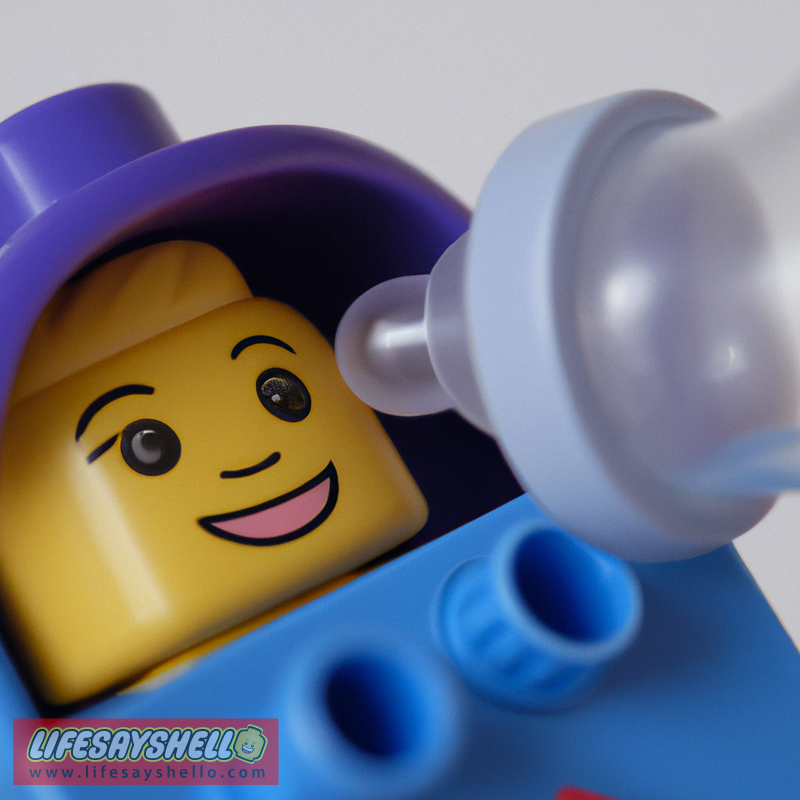How to Perfectly Feed Your Baby with a Bottle: A Step-by-Step Guide for New Parents

If you’re a new parent preparing to bottle feed your baby, you likely have a lot of questions. How much formula should you give them? What’s the best way to hold the bottle? How often should you feed them? Properly feeding a newborn or infant with a bottle takes some skill, but it’s easy to learn with the right guidance.
In this comprehensive guide, we’ll walk you through everything you need to know about bottle feeding success. You’ll learn proper techniques for holding your little one, how much milk or formula to use, ideal feeding schedules by age, burping best practices, and more. With these tips, you can master stress-free bottle feedings that provide your baby with the nutrition they need while creating a relaxing bonding experience for both of you.
The Benefits of Bottle Feeding
Bottle feeding offers a few key advantages for babies and parents alike:
Nutrition - Formula and breastmilk in bottles provide babies with essential vitamins, proteins, fats, and calories for growth and development. For babies who aren’t exclusively breastfed, bottle feeding ensures they still get proper nutrition.
Bonding - Feeding time is prime bonding time. Bottle feeding allows both parents chances for one-on-one connection through snuggles, eye contact, talking, and more.
Flexibility - With bottles, parents can have others help with feedings for a break. Babies can also stick to a feeding schedule since bottles store easily.
Tracking intake - Seeing exactly how much milk or formula a baby takes with each bottle makes it easy to ensure they’re eating enough.
With the right techniques, bottle feeding can be an easy, bonding experience that provides your baby with the nourishment they require. So let’s get started with the key steps!
Preparing Bottles and Formula Properly
Before bringing that bottle anywhere near your hungry baby, you first need to make sure it’s clean and ready to go. Here are bottle feeding prep essentials:
Clean and sterilize bottles and nipples - New bottles and nipples should be sterilized by boiling or steaming prior to first use. After each use, thoroughly wash bottles and nipples in hot, soapy water or using a bottle sterilizer.
Make formula correctly - For powder formula, carefully follow instructions on the box to measure out water and powder. Never “eyeball” amounts or over-dilute.
Heat milk or formula - Babies prefer warm bottles closer to body temperature. Run the sealed bottle under warm water or place in a bottle warmer. Test temperature before feeding.
Prepare feeding area - Pick a calming spot away from distractions with supplies like burp cloths on hand. Holding your baby comfortably is the goal.
With clean gear, warm milk, and a peaceful feeding zone, you’re ready to put your bottle skills to work!
Perfecting Your Bottle Feeding Position
An ideal feeding position keeps your baby comfortable, lets them swallow easily, and reduces air intake that can cause gas. Here are some top positions to try:
Cradle hold - This classic hold cradles your baby’s head in the crook of your elbow with their body along your forearm. Tilt their head slightly upward and bring the bottle nipple to their lips.
Football hold - Tuck your baby’s body under your arm like a football, using that hand to support their head and neck. Tip their head back and offer the nipple.
Side-lying - Laying down side-by-side can be cozy for night feeds. Make sure your baby’s head is propped higher than body.
Supported upright - Sitting up with head support lets gravity help feed. Just watch for milk dripping from corners of mouth.
Whichever position you choose, keep the bottle horizontal - not pointing upward. This ensures milk fills the nipple so your baby doesn’t swallow too much air.
How Much and How Often Should You Bottle Feed?
Knowing the ideal bottle feeding amount and frequency for your baby’s age is key to keeping their tiny tummies full and happy. Here are the averages to aim for:
Milk/Formula Intake by Age
- Newborns: 1-3 oz every 2-3 hours
- 1 month: 3-4 oz every 2-3 hours
- 2 months: 5 oz every 3-4 hours
- 4 months: 6 oz every 3-4 hours
- 6 months: 7-8 oz every 4-5 hours
For formula-fed babies, the daily goal is around 2.5 ounces per pound of body weight. If your baby seems hungrier, gradually offer larger bottles while avoiding overfeeding.
Feeding Frequency by Age
- Newborns: 8-12 times per day
- 1-2 months: 7-9 times per day
- 3-6 months: 5-6 times per day
- 6-12 months: 3-5 times per day
Watch your baby for hunger cues like rooting, sucking motions, hands to mouth, and fussing to know when it’s chow time again!
Why Burping Is Non-Negotiable
During bottle feedings, swallowing air is inevitable. This can lead to gas pain, spit up, and general discomfort if that air isn’t burped out frequently.
Here’s how to become a pro burper:
Burp halfway through each feeding - Take a natural pause halfway through the bottle to burp your baby.
Post feeding burp - Always burp once more after your baby finishes the bottle to get that last bit of air out.
Pat or rub gently - Place baby upright against your shoulder and softly pat or rub their back until you get a good burp (or two!).
Regular burping breaks will make your baby much more comfortable during and after feedings. Don’t skip this essential step!
Bottle Feeding Mistakes to Avoid
While bottle feeding has a bit of a learning curve, be sure to avoid these common feeding mistakes right off the bat:
Never prop bottles - Leaving bottles propped up puts babies at risk of choking. Always hold your baby during feedings.
No solid foods in bottle - Putting cereals or solids in a bottle to try and help babies sleep longer can create choking hazards.
Don’t force your baby to finish - This can lead to overfeeding, vomiting, gas, and other issues. Honor your baby’s fullness cues.
By being aware of these pitfalls, you can set your baby up for safe, pleasant bottle feeding experiences right from the start.
Mastering Bottle Feeding as a New Parent
If you’re feeling overwhelmed as a new parent when it comes to bottle feeding, don’t stress! Follow this guide and you’ll quickly get the hang of:
- Sterilizing and preparing feeding gear properly
- Finding comfortable feeding positions
- Knowing the right amounts of milk or formula for your baby’s age
- Feeding your baby on demand or by optimal schedule
- Burping regularly - it’s a must!
- Avoiding common bottle feeding mistakes
Feeding time presents lots of chances for bonding, closeness, and meeting your baby’s needs. With the right bottle feeding techniques, you can make the most of this special experience with your little one!
Still have questions? Be sure to consult your pediatrician for personalized advice. And enjoy watching your baby thrive as you master bottle feeding together!




Comments